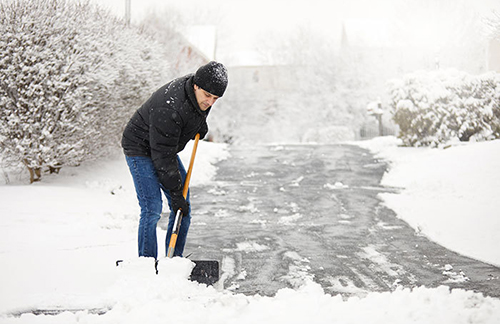Nothing marks winter in Ohio better than white roads caked with deicing salt. While rock salt is necessary to prevent icy roads, it can do some serious damage to your lawn.
You might notice brown strips of brown grass lining your driveway, sidewalk and roadway after the snow melts in the spring. This is due to high salt concentration in the soil. Salt can dry out your lawn’s roots and result in dead strips. Not to worry (right away) though! Salt-damaged grass typically rebounds after the snow melts and the spring rain falls. The increased moisture washes out the salt and allows the roots to recover in a few weeks.
In a some cases, salt damage is simply too much to overcome and reseeding becomes necessary. In these instances – we recommend digging up the dead grass with a strong rake and planting new seed.
While salt damage feels invetible in Northeast Ohio lawns, there are actually some things you can do to protect your yard.
Burlap Sacks
Cover the edges of your lawn prone to salt damage with burlap sacks or other landscape fabric. This will prevent most of the deicing salt from reaching your grass and soil.
Use Less Salt
It sounds easier than it is, but cutting back on salt usage makes a world of difference—especially in recently planted yards. You can even use a salt-alternative like sand to sit on top of the ice making it safe to drive and walk on without damaging your lawn.
Decorative Borders
A little hardscaping or landscaping goes a long way with curb appeal.and salt damage prevention. Usually, salt ends up caught along the edges of a stone or brick driveway border keeping it out of your precious lawn.
Need help reseeding or fertilizing your lawn after salt damage? Contact Grass Master today!

